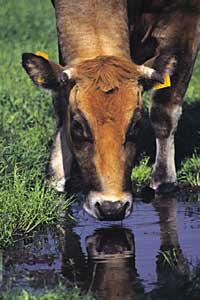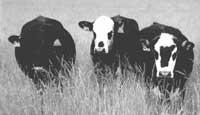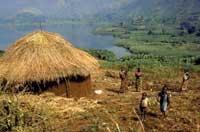Are cows a source of flu pests?
2002/01/10 Galarraga Aiestaran, Ana - Elhuyar Zientzia
At the recent meeting on veterinary and microbiology in London, it has been stated that one of the virus deposits that can produce influenza in humans can be cattle. The team led by Ian Brown, from the UK veterinary laboratories agency, has first detected the flu gene in cattle.
The last widespread flu epidemic occurred in 1968. Viruses occur in wild birds and are believed to be fatal when infecting poultry or pigs. In cells infected with another variety of flu, viruses receive genes that allow human contamination.

It has now been announced that deaf bovine viruses may appear as varieties capable of infecting humans. However, they do not know when the cow virus came up, or whether it spreads from cow to cow. In addition, they have warned that in addition to bovine, there may be many other deposits.
Each year, due to the transfer of superficial virus proteins, new varieties of influenza appear. As soon as the main varieties are detected, vaccines are prepared. But viruses that spread directly from animals to humans are so different that neither the immune system nor vaccines can resist.
These deadly varieties occur every 30-40 years, so the next pandemic is expected. An emergency occurred in 1997 when at a Hong Kong poultry fair, the bird virus infected 18 people. Of them 6 died, but as human beings were not infected, the virus died with the sick.
Most forecasts suggest that, as in the previous case, the following influenza pandemic will originate in Southeast Asia, where avian livestock, wild birds, pigs, markets and humans are mixed. Researchers suspect that flu varieties are increasingly produced in animals.
To try to avoid the risk of pandemic, a genetic analysis of the most frequent influenza varieties in Europe and the Middle East (previously studied in Asia) is being carried out. In addition, genetic changes that allow the virus to move from one species to another are being studied. With all this information they hope to anticipate what a pandemic might be and prepare vaccines.

Gai honi buruzko eduki gehiago
Elhuyarrek garatutako teknologia





